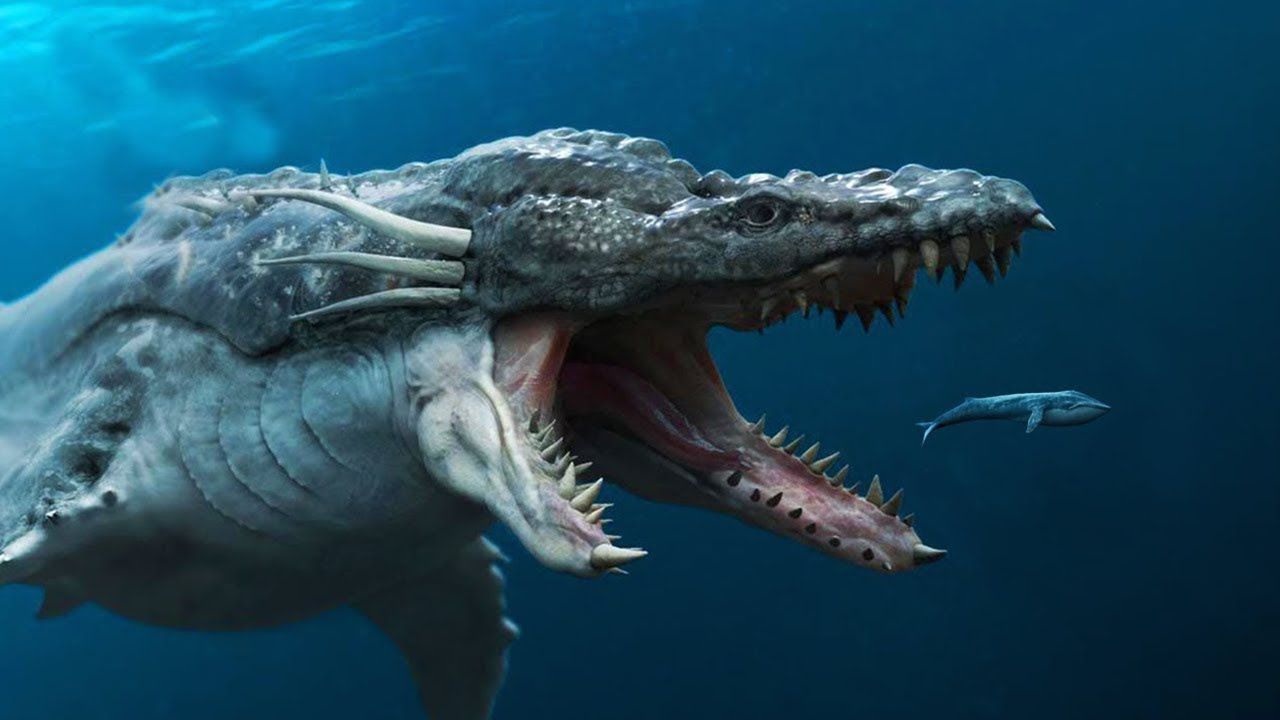While dinosaurs get all the attention, discover why prehistoric creatures like the terror bird and the Titanoboa are just as terrifying.
For about 135 million years, dinosaurs were the undisputed rulers of the Earth. And they might still have been today if not for the cataclysmic comet that struck Earth some 65 million years ago. However, our planet has been around for a lot longer than the dinosaurs’ reign and, as it turns out, nature has been quite adept at producing nightmare-inducing monsters other than dinosaurs.
To think that dinosaurs are the only scary inhabitants of our prehistoric past would be a big, big mistake.
From ocean-dwellers far bigger than great whites to sky-dwellers bigger than giraffes to an elephant-sized sloth, here are ten of the scariest — and most fascinating — prehistoric creatures…
Titanoboa

A life-size model of the Titanoboa.
If the movie Anaconda terrified you (and not because of J-Lo’s acting), you might want to skip this one.
Simply put, Titanoboa is the largest snake that ever existed. It grew to more than 40 feet long and could weigh up to 2,500 pounds. To put things in perspective, that’s almost as much as a grown giraffe weighs.
Titanoboa appeared not long after the dinosaurs went extinct, perhaps filling a niche left open by the disappearance of the world’s former top predators.
But had Titanoboa and the dinosaurs coexisted, here’s how a battle between the massive snake and a T. rex might have gone:
Liopleurodon
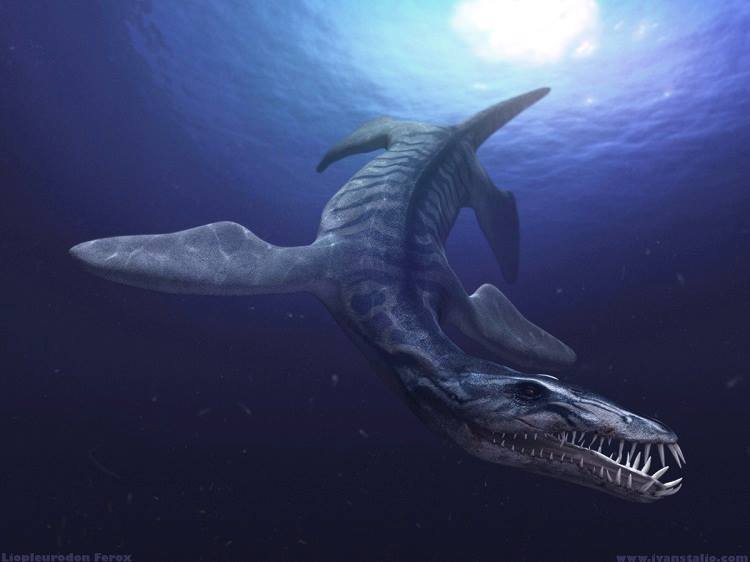
The Jurassic ocean was not a friendly place to live in.
Plesiosaurs were a group of marine reptiles that appeared and disappeared almost at the same time as the dinosaurs, so the popular confusion of the two groups is understandable.
And if there was one plesiosaur you needed to watch out for, it was liopleurodon. This carnivorous beast could weigh more than 3,500 pounds and reach lengths greater than 30 feet, with nearly a quarter of that being its massive skull — complete, of course, with enormous jaws and several rows of razor-sharp teeth.
If you’re brave enough, check out the liopleurodon in action:
Sarcosuchus
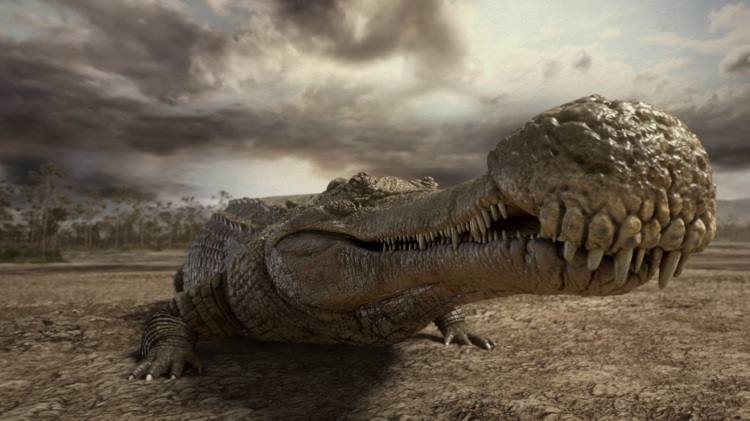
The head and jaws of sarcosuchus resemble those of a modern gharial.
This gargantuan predator is colloquially called SuperCroc, which gives you an idea of what it looked like. Not technically a crocodile, the sarcosuchus was actually its distant relative, the primary difference being their size.
At almost 40 feet long, sarcosuchus was almost twice as long as the saltwater croc, the biggest crocodile we have today. It also weighed around eight metric tons, which meant that it could take on almost any challenger it faced. And that’s a good thing, because sarcosuchus lived alongside the dinosaurs (who often became its lunch).
Mosasaurus

A mosasaurus as depicted in Jurassic World.
Like plesiosaurs, mosasaurs were marine reptiles, and not technically dinosaurs. At almost 60 feet in length, mosasaurus was the biggest of the bunch.
In fact, it was one of the most dangerous creatures prowling the waters throughout the entire Cretaceous period. It looked like a massive crocodile (particularly the head), only equipped with fins, which — terrifyingly — allowed it better mobility in the water.
Thanks to the Discovery Channel, we can see what a mosasaur looks like when “upset”:
Megalodon

Actual megalodon tooth compared to teeth from a great white shark. Image Source: Wikipedia
This enormous, extinct shark species has become one of the most well-known prehistoric creatures, perhaps second only to the T. rex.
By far the biggest species of shark to have ever existed, the megalodon is generally thought to have looked similar to the modern great white. However, while a great white shark can grow to be 20 feet long and more than 7,000 pounds, megalodon was estimated to be 60 feet in length, weighing anywhere from 50 to 100 metric tons.
Megalodon only died off about 2.6 million years ago. This means that it often interacted with (and by “interacted,” we mean “ate”) animals that are still around today, like giant sea turtles, porpoises, and even whales.
Check out Shark Week’s coverage of the monstrous megalodon:
Prehistoric Animals: Quetzalcoatlus

On the ground, Quetzalcoatlus was about the size of a giraffe. Image Source: Go Pix Pic
Let’s quickly dispel a myth: Despite being featured in every dinosaur movie and TV show ever, the pterodactyl was not a dinosaur. It was a pterosaur, a completely different order from dinosaurs. But even the pterodactyl wasn’t the most dangerous thing in the skies. That honor goes to quetzalcoatlus, the largest creature ever to fly.
The problem is that due to poor fossil records, we don’t know exactly how big it was. Modern estimates place its wingspan at around 35 feet (while earlier estimates were much more generous, at more than 60 feet).
Weight is even more difficult to measure, but scientists think they weighed between 450 and 550 pounds.
Gorgonops
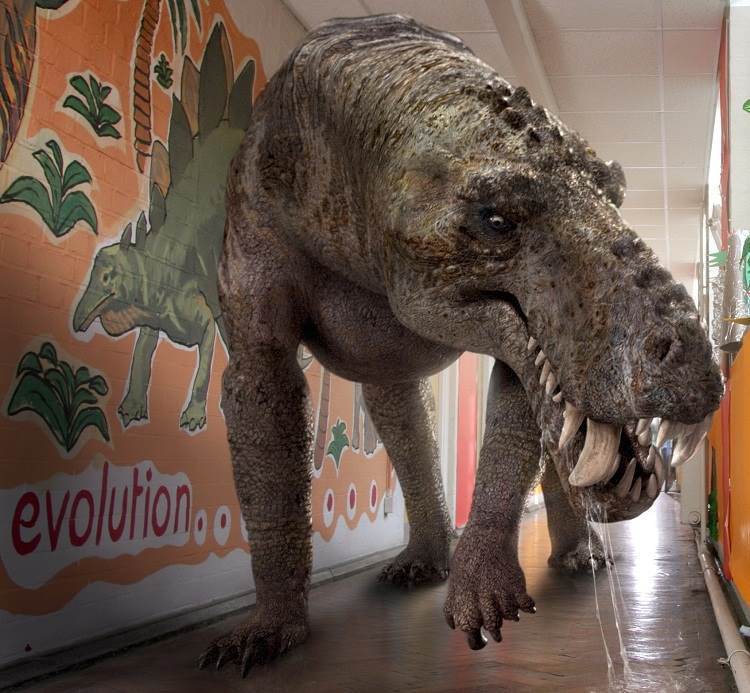
Image Source: Wikia
Clearly, our planet was full of fearsome prehistoric creatures before the dinosaurs ever came along. Another prime example is gorgonops, an animal that lived 260 million years ago, way before dinosaurs became the dominant predators.
At around six to 10 feet in length, gorgonops was a fast and vicious predator, allowing it to rise to the top of the food chain. Of course, it also helped that gorgonops had massive canines so large that they nearly protruded beyond its lower jaw.
Phorusrhacidae

Reconstruction of a terror bird.
Their scientific name is neither particularly intimidating nor easy to remember, so let’s just refer to these large, flightless, carnivorous birds by their colloquial name: terror birds.
They grew to between three and 10 feet long, stood up to 10 feet tall, could run at speeds of 30 miles per hour, and had a giant, curved beak, like an eagle’s. The only living relative of the terror bird is the seriema, a 35-inch bird that’s about as threatening as a butterfly.
Nevertheless, don’t underestimate the terror bird, a top predator for almost 60 million years.
Megatherium

Despite its size, megatherium was probably an omnivore or herbivore. Image Source: Wikipedia
A sloth isn’t exactly the first thing that comes to mind when thinking of deadly monsters. But the megatherium was more like the modern sloth’s giant, angry grandpa. It behaved like a sloth, sort of looked like a bear, and was about the size of an elephant.
Unlike an elephant, though, megatherium also had giant claws and could stand on its hind legs to appear even more massive. And unlike all other animals on this list, there’s a pretty strong chance that humans interacted with this giant sloth because megatherium only died out as recently as 10,000 years ago.
Thalattoarchon
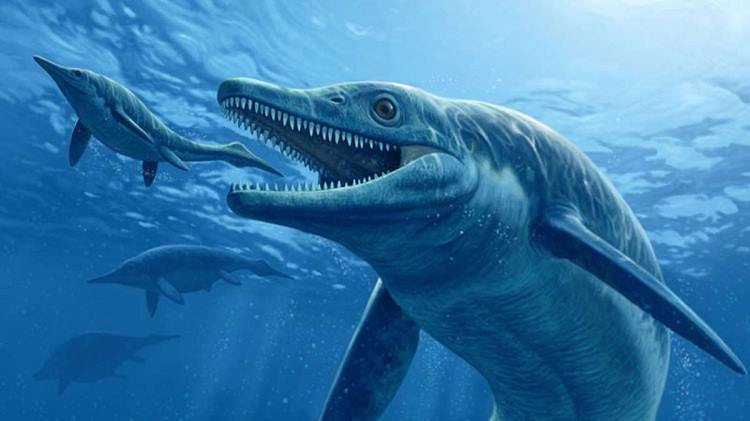
Image Source: HNA
Thalattoarchon is the new kid on the block, having only been discovered a few years ago and first officially classified in just 2013.
It was an ichthyosaur, another group of marine reptiles commonly and incorrectly believed to be dinosaurs. Thalattoarchon were 28-foot-long apex predators whose massive jaws allowed them to hunt prey almost as big as they were.
With this beast only being discovered five years ago, it begs the question: What other unimaginable prehistoric creatures’ remains now sit beneath the ground and the sea, waiting to be discovered?

